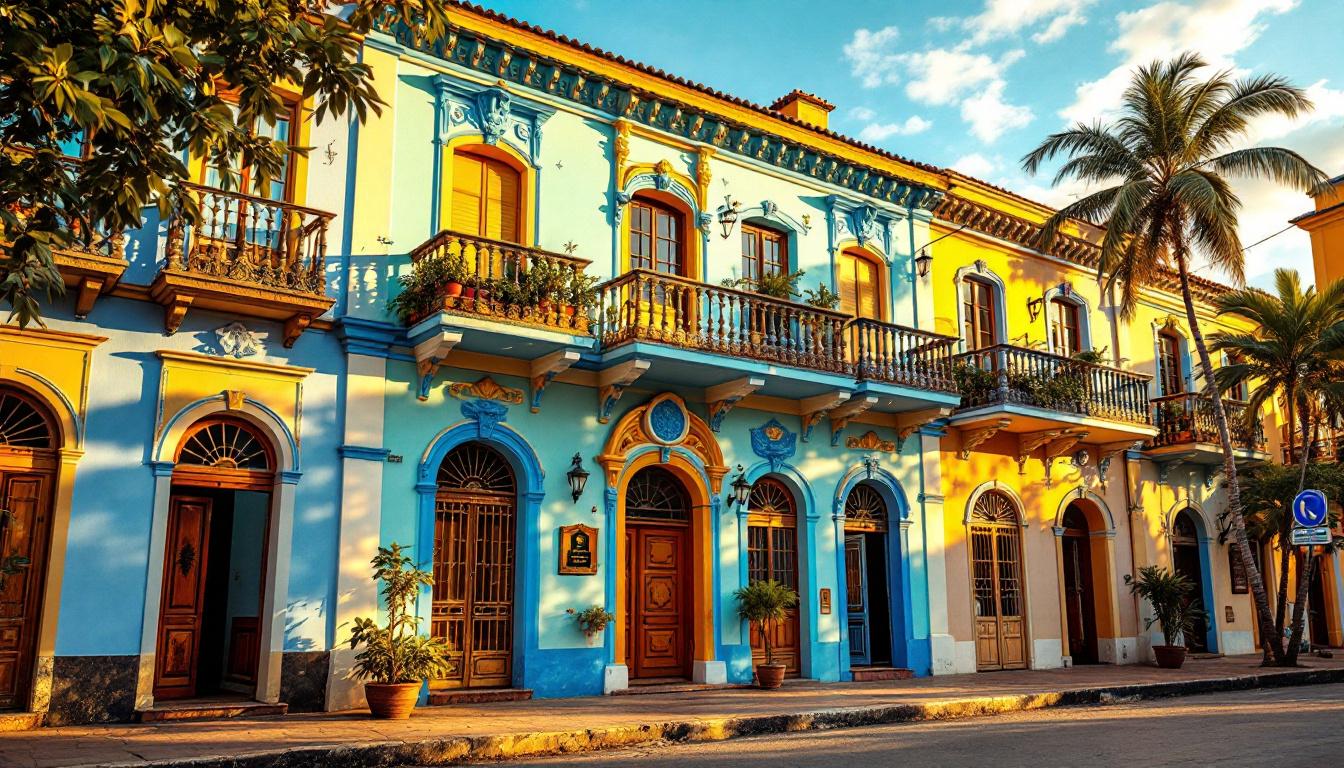Porto-Novo, Benin’s official capital, remains one of West Africa’s most overlooked treasures—a living museum where Afro-Brazilian architecture creates a surprising cultural landscape unlike anywhere else on the continent. This coastal gem in the Ouémé department tells a remarkable story of cultural resilience through buildings that blend Portuguese colonial styles with African sensibilities.
The unexpected Brazilian connection that shaped an African capital
Porto-Novo’s story begins not in Africa, but across the Atlantic. When freed slaves returned from Brazil in the 19th century, they brought architectural traditions that transformed the cityscape. These “Agudas,” as the returnees were known, created a unique cultural fusion visible in colorful facades and ornate churches that echo Salvador de Bahia rather than neighboring African cities.
“Our buildings speak two languages at once—Brazilian in style but African in spirit,” explains local historian Marcel Adande. “Each doorway tells the story of people who returned home transformed but determined to preserve their identity.”
Where Islamic faith meets Brazilian design
Perhaps nowhere illustrates Porto-Novo’s cultural fusion better than the Grande Mosquée. Originally built as a church by returning Afro-Brazilians, this architectural marvel was later converted to a mosque while maintaining its distinctly Brazilian aesthetic—complete with pastel colors and baroque flourishes typically found in Catholic churches.
The mosque’s unusual history mirrors similar cultural exchanges happening in North African cities with centuries-old Islamic architectural traditions, though Porto-Novo’s version features a uniquely transatlantic influence.
A royal palace frozen in time
The Musée Honmé (Royal Palace) offers visitors a glimpse into pre-colonial royal life. Once home to King Toffa I, who signed treaties with the French in the late 19th century, this mud-brick complex houses artifacts that showcase the sophisticated political systems that existed before European arrival.
Though currently undergoing renovations, the palace’s courtyard still echoes with the footsteps of royal guards and diplomatic envoys who once gathered here to determine the region’s fate.
Botanical treasures hidden in plain sight
The Jardin des Plantes et de la Nature serves as Porto-Novo’s green lung—a tropical haven where visitors can escape the city’s bustle. This botanical garden showcases indigenous medicinal plants that have been used by traditional healers for centuries.
Nature enthusiasts who’ve explored Vietnam’s reclaimed natural spaces will appreciate how Porto-Novo’s garden similarly preserves botanical heritage amid urban development.
Markets that awaken all five senses
The Central Market in Porto-Novo’s Acron district offers a sensory overload that rivals the busiest bazaars of North Africa. Vendors hawk everything from medicinal herbs to intricately carved voodoo figurines. The market’s narrow aisles burst with colors, sounds, and the aromas of local spices.
“Our market isn’t just for commerce—it’s where our community maintains its connections,” says Mama Sekou, a third-generation vendor of medicinal plants. “Every transaction carries centuries of tradition.”
Budget-friendly cultural immersion
Like Colombia’s affordable Caribbean alternatives to Cancun, Porto-Novo offers authentic cultural experiences at a fraction of the cost of more popular African destinations. Museum entrance fees rarely exceed CFA 1,000 (approximately $1.70), while zemidjans (motorcycle taxis) provide affordable transportation around the city.
Adventurous travelers can arrange homestays with Afro-Brazilian families, offering unparalleled cultural immersion for budget-conscious explorers seeking alternatives to crowded tourist destinations.
When adventure and history collide
While Porto-Novo may not offer the adrenaline rush of New Zealand’s extreme sports, the city provides a different kind of adventure—cultural time travel through layers of African, Portuguese, French, and Brazilian influences that have shaped this remarkable capital.
Porto-Novo isn’t just a destination; it’s a living testament to cultural resilience—where freed slaves returned to Africa bringing architectural traditions from Brazil that still stand proudly today, creating a unique capital city where history doesn’t just echo—it sings in Portuguese, French, Yoruba, and Fon.
